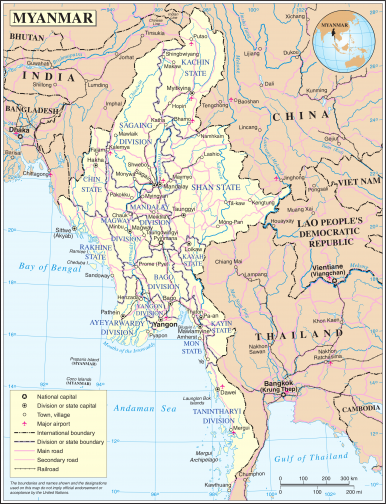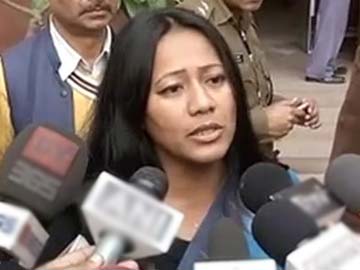In a region like the North-east, where few groups actually constitute a numerical majority, the State has been involved in unending and fatiguing efforts to deal with a cycle of demands and counter-demands
The recent attacks and killings in Assam, Manipur and
Meghalaya by armed non-State groups represent a challenge and test for
the Narendra Modi government and the need to understand the frustrating
complexities of the North-eastern region.
Things are
not being made easy after strident demands by the newly elected
Bharatiya Janata Party MPs from Assam to rid the State of
“Bangladeshis,” a phrase that many from the minority community say is
aimed at targeting them, irrespective of nationality, and one that can
swiftly turn into a security nightmare not just for governments in Delhi
and Dispur, but also for ordinary people caught up in a storm. For a
moment, the “Bangladeshi” issue has moved away from the headlines
because of other events that have captured public attention.
A
Superintendent of Police in Assam’s Karbi Anglong district was shot
dead when his tiny unit was engaged in a fight with an armed group
wanting a separate state for the Karbi community in the jungles of
Assam’s eastern hills — the second major setback that the police in the
State have suffered, an Additional Superintendent having fallen earlier
to the bullets of an armed faction from the Bodo tribe.
Some
400 kilometres west of Karbi Anglong, blurred images emerge of a woman
who was executed gangland style execution after she resisted rape by men
from the “Garo National Liberation Army” in Meghalaya. The GNLA was
launched five years back by a former police officer, who is now in
police custody. But the group is still active, extorting funds, and
carrying out strikes against security forces and civilians.
Rise of insurgent factions
The
law and order situation in the Garo Hills, the home district of
Meghalaya Chief Minister Mukul Sangma, is such that a top official says
that his men could not have moved to the village of the murdered woman
at night as they got word of a possible attack on police convoys. They
got the news when the woman’s family walked into a police station and
told them what had happened. This is a poor reflection of police
capacity, underscoring the need for better equipment as well as strong
political leadership.
These issues underline both
the ethnic and social complexity of the North-eastern region, home to
over 200 ethnic communities, as well as how political mobilisation and
armed violence have changed in these past years. While the principal
militant factions have been sitting at the negotiating table with New
Delhi or in “designated camps” for years, be it the Nagas, Assamese,
Karbis, Bodos and Garos, they are being sharply challenged by smaller,
more violent, breakaway factions.
Armed with new
weapons which are easily available in the illegal small arms markets in
the region, combined with new technology and better connectivity, these
groups are demonstrating the seamless manner in which they can move
across State borders.
The level of violence is
especially stark when contrasted with the extraordinary beauty of the
countryside across all States, although the towns and cities, as
elsewhere, are turning into ugly urban sprawls. The Bodo-Muslim riots in
2012, which displaced nearly half a million people, and the incident
earlier this year when over 30 men, women and children were butchered by
armed men in the Bodo areas are examples of such violence. All the
victims this time were Muslim and the resonance of public anger — of
minority as well as non-Muslim, non-Bodo groups — was visible in the
overwhelming victory of a non-Bodo candidate in a Lok Sabha
constituency.
Amid this fabric, what is often
forgotten is the chain of interconnected events and the contemporary
political narrative: thus, in the Bodo Territorial Council areas, the
first attacks on Muslim and other groups took place in the Bodo areas in
1993. Earlier, few such incidents were reported. There were tensions
over land issues but these had not spiralled into the bloodshed that
followed later.
There is another process that the
Modi government will be aware of — that of manufactured consent. In a
region like the North-east, where few groups actually constitute a
numerical majority — one is not speaking on religious but ethnic grounds
here — the State has been involved in unending and fatiguing efforts to
deal with a cycle of demands, counter-demands, agitations and
resolutions. This has dominated the political discourse in the region.
Thus, almost every State experiencing conflict is witness to a
non-violent process by a group demanding greater powers — such as for a
community or group of communities, putting forth an overall set of
political demands such as greater autonomy or a separate State. Yet,
this runs almost in parallel with violent movements for, ironically,
either similar demands or, going a step further, for “independence.”
This
began with the Naga movement in the 1950s and spread to the Mizo Hills,
Manipur, Assam, Tripura and Meghalaya, although in the latter, armed
movements rose against their own State governments in the 1990s.
In
almost every movement, “outsiders” have been targeted — whether it is
those from another State, of a different linguistic or ethnic group or
the so-called “Bangladeshis.” Yet, today, in almost every State, major
armed organisations which have thrown challenges to Delhi over the past
six decades have abandoned the gun and are either negotiating with the
Centre or engaging in ceasefire. The most visible sign of this was the
landslide victory of a former leader of the United Liberation Front of
Assam from the Bodo areas. He crushed the official Bodo candidate in the
Lok Sabha election and took his oath of allegiance to the Constitution
in Parliament — the very Constitution against which he had taken up arms
earlier.
Yet, agreements and semi-agreements have
been the pattern in the region. These have a history of spawning
breakaway groups which claim to be “anti-talks,” yet want to be at the
table with the big boys; they hit hard at easy targets, showing the
difficulties that police and other forces face in moving through
difficult terrain. The smaller groups too want a share of the funds
flowing into the region and the power that goes with it.
Political
will is critical to dealing with this. Small States like Meghalaya have
been adversely hit by the disinclination of both government and
Opposition leaders in taking a tough line on the “boys” in the Garo
Hills. Earlier Chief Ministers had demonstrated political courage,
authorising crackdowns that forced Khasi and Garo groups to the
negotiating table. It is also not a mere coincidence that the armed
groups concentrate on the coal-rich areas of the Garo Hills where
extraction is highly profitable and where prominent political figures
are said to have business interests.
Thus, a pattern
has emerged over the past decades — New Delhi, to use a BJP catchphrase,
has always tried to appease the largest group agitating or fighting for
a cause or one which is prepared to talk. It has not tried to resolve
the core issue or issues which involve a broader and deeper dialogue
with other groups, and with non-government and civil society figures,
scholars and organisations. Without that kind of work, through mediators
and counsellors, no agreement can work or last.
Perhaps
Delhi thinks it is just a matter of being politically “realistic” — but
such realism has backfired time and again. This was most evident during
the standoff between Telangana and Andhra.
And the North-east, with its many divergent and parallel ethnic mobilisation processes, is a far more difficult place. This then is the problem with what one could call “manufactured comfortable consent” — such agreements rarely last,for they are designed for short-term gains such as placating a demand, winning an election, creating a new elite and giving the government some breathing space. Often, the agitators are not as representative as they claim to be.
And the North-east, with its many divergent and parallel ethnic mobilisation processes, is a far more difficult place. This then is the problem with what one could call “manufactured comfortable consent” — such agreements rarely last,for they are designed for short-term gains such as placating a demand, winning an election, creating a new elite and giving the government some breathing space. Often, the agitators are not as representative as they claim to be.
Focus therefore is of the essence, and not haste.
No to rights abuse
The Centre should not be diverted by recent events and instead
concentrate on speeding up the prolonged Naga negotiations (now on for
nearly 18 years). The Delhi-Naga talks do not even have an official
negotiator as former Nagaland Chief Secretary Raghaw Pandey quit before
the election to join the BJP but did not get a nomination. Other
negotiations also need to be pursued with vigour and vision.
The
Modi government must send a clear and unambiguous message to its
members and followers that they cannot take law into their hands over
the issue of “Bangladeshis.” This could spread fear, tension, mistrust
and worse in Assam. Due process must be followed — otherwise there is
acute danger of violence, tragedy and abuse of human rights just because
of a person’s religion. Isn’t the Pune murder of the young Muslim
techie by Hindu thugs a warning and wake-up call? The media must play a
sober role in this because definitions of “Bangladeshis” are often
blurred and arbitrary.
We need to abide by the recent judgment in the Meghalaya High Court which, while stating the obvious, defined a Bangladeshi as someone who came to India after the creation of Bangladesh in 1971. Many tend to look at much earlier cut off dates in their search for “illegal migrants.”
We need to abide by the recent judgment in the Meghalaya High Court which, while stating the obvious, defined a Bangladeshi as someone who came to India after the creation of Bangladesh in 1971. Many tend to look at much earlier cut off dates in their search for “illegal migrants.”
New Delhi needs
to inform all State governments in the region — whichever the party —
that the murder of innocents, of whichever ethnicity, religion or
language group, and the abuse of rights by armed groups (or security
forces) and local thugs is unacceptable. Such violations need to be met
with a cabrated robust response aimed at showing results in a specific
time frame.
(Sanjoy Hazarika
is director of the Centre for North East Studies and Policy Research at
Jamia Millia Islamia, New Delhi. The views expressed are personal.)


















